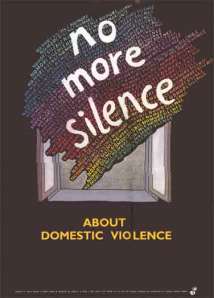Published in 1995, Helen Garner’s account of the scandal surrounding the then Master of Melbourne University’s Ormond College, Dr Colin Shepherd, after allegations of sexual harassment were made against him by two female students, is agonisingly current all these years later, and ought to be read and re-read by anyone interested in feminism, sexual harassment, and power in human relationships.
The book opens with the transcript of Dr Shepherd’s first police interview, after the women lodged complaints of indecent assault against him. Ultimately, the charges against him were dismissed, it being concluded that it was a question of “oath against oath.” Shepherd subsequently lost his job, became “too hot” for anyone to employ, and his wife and children suffered appallingly as a consequence of the media circus.
Throughout the book, Garner asks the question, why did the women take this matter to the police as a first resort? Melbourne University did at that time have procedures in place to address complaints of sexual harassment. Garner interviews the outgoing Women’s Officer of the Student Union:
“I asked her my forlorn but crucial question: how and why did the police get involved in this case? She answered me with a firm statement.
‘The procedures here didn’t lead to justice…The procedures at the moment,’ she said, ‘are structured so that you get an apology and you get the behaviour to stop – and that’s all.’
‘Isn’t that already quite a lot?’
She looked at me narrowly. ‘I’m against people having to go through conciliation before there can be retribution.’
‘Retribution?’ The Old Testament word took my breath away.
‘If you want some form of justice,’ she went on, ‘for the harasser to be punished, you’re seen as asking too much. You’re being “nasty.”‘
‘What sort of punishment would you envisage?’
‘In the industrial award for academics,’ she said, ‘there’s a clause that deals with serious misconduct. Dismissal is appropriate if the charge is found to be proven – and if it’s harassment that constitutes an assault.’
‘Assault?’ I repeated, confused. ‘Dismissal.’
The Women’s Officer, Christine G-, explains “icily” to Garner that young women don’t have the knowledge or power to control exchanges between themselves and harassing lecturers and tutors.
‘As you get older,’ [says Garner] you begin to understand that a lot of men in harassment situations are weak. You realise that behind what you saw as a force, all those years, there’s actually a sort of terrible pathos. Blokes who come onto girls are putting themselves out on a limb – their self is at risk. You start to learn that women have got a particular power of their own, if only they knew it.’
‘A girl in her first tute,’ she [Christine G] said stubbornly, ‘doesn’t know that.’
‘That’s true – but our job as feminists is to teach them this, surely. To a woman of my age, blokes who behave as Colin Shepherd was accused of doing aren’t scary, or powerful. They’re just poor bastards.
She bristled. ‘They may be “just poor bastards”, but they’ve abused their power. Sexual harassment is ultimately not about sex. It’s about power.’
Of course these problems are real, Garner writes. Every woman knows it. But this constant stress on passivity and weakness – this creation of a political position based on the virtue of helplessness – I hate it.”
Garner incurred great feminist wrath on the publication of her book. She encountered great feminist wrath throughout its writing: doors were slammed in her face by women close to the situation, and she was never able to interview the two women at the heart of the matter. As Garner makes clear many times, she wanted to understand the experiences of the two complainants. She wanted to hear their side of the story, and why they had acted as they did, for example, refusing to take the matter to the Equal Opportunity Commission until after it had been dealt with in the courts and dismissed, rather than before. At every turn, she is met with hostility, rage and icy dismissal. She writes:
“What sort of feminists were these, what sort of intellectuals, who expected automatic allegiance from women to a cause they were not even prepared to argue?”
During the writing of the book, Garner takes a job with Time Australia, reporting the trial of a man accused of having murdered his girlfriend’s two-year-old son. She writes:
“The horrors I heard in the Supreme Court each day threw the Ormond story into merciless perspective…it seemed the site of an absurd, hysterical tantrum, a privileged kids’ paddy.”
Garner is unable to obtain an answer to her question as to why the complainants:
“…charged past conciliation into the traditional masculine style of problem-solving: call in the cops, split off the nuances of character and relevant context, and hire a cowboy to slug it out for you in the main street at noon, with all the citizenry watching.”
Garner’s book sprang into my mind yesterday, after thinking about how the matter of the offensive tweets I posted yesterday was handled, and after reading commenters’ responses to that post. The situations hold different positions on a continuum: Dr Shepherd was charged with indecent assault after allegedly fondling a young woman’s breast. Garner reports that the young woman:
“…told the court that Dr Shepherd had got down on his knees before her. Which of them does the word humiliated apply to, here?”
Perhaps what needs to be said today was said by Garner at the end of her book, in 1995:
“…I know that between ‘being made to feel uncomfortable’ and ‘violence against women’ lies a vast range of male and female behaviours. If we deny this, we enfeeble language and drain it of its meaning. We insult the suffering of women who have met real violence, and we distort the subtleties of human interaction into caricatures that can serve only as propaganda for war. And it infuriates me that any woman who insists on drawing these crucial distinctions should be called a traitor to her sex.”


 In
In 





































Recent Comments